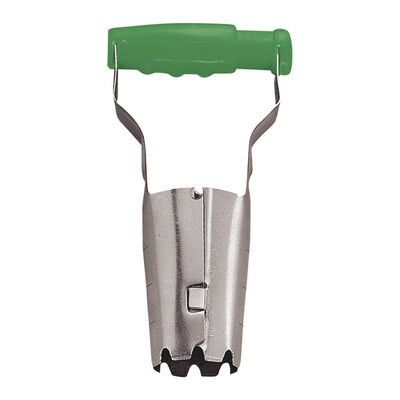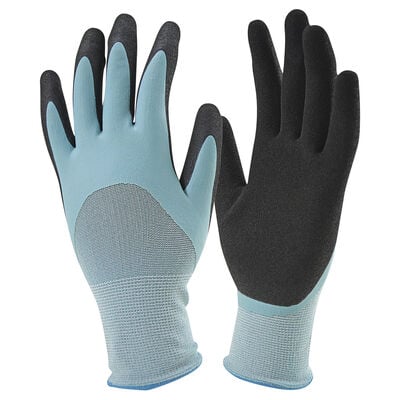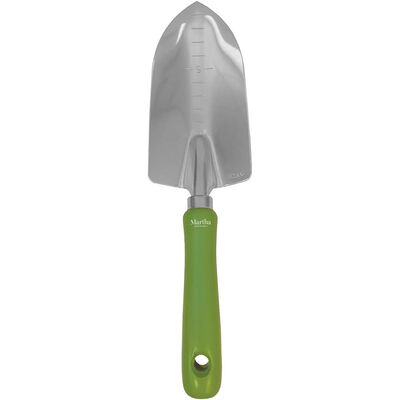
Your Guide To: Bulbs & Bare Roots
Everything you need to know to care for bulbs and bare root plants.
Although they may take some patience and planning ahead, plants that begin from bulbs and bare roots produce some of the most beautiful flowers you can find. From vibrant freesia to timeless lily of the valley, these plants help invigorate your outdoor garden, or even bring the beauty of blooms indoors when tended to in pots.
Once you learn a little about them, bringing bulbs and bare roots into your growing endeavors can easily become one of your favorite sights to see as blooms brighten your days in the spring, summer, and even fall seasons.
How to Keep Bulbs & Bare Root Plants Happy
Most bulbs and bare root plants grow best outside, as this is where they can receive the most consistent nutrients and have the most space to spread out. But with the proper care, you can keep many plant types happy and healthy growing indoors in pots, too.
How & When to Plant Bulbs & Bare Root Plants
Once you have selected your bare roots and bulbs for planting, there are 2 main planting periods to keep in mind: In the spring, just after the final frost of the season for summer bloomers, and in the fall, right before the first frost for those bulbs or bare root plants that bloom in spring.
Whether you’re planting bulbs or bare root plants in a pot or directly in the ground, you want to make sure that location has decent drainage. If you plant your bulbs or bare roots in a place that retains too much water and often remains wet and soggy, this could lead to the bulb or bare root rotting and deteriorating.

Some plants, like butter cups or freesias, like to start off with a little extra water, and will need to be soaked in water for multiple hours prior to planting to jumpstart the sprouting process. Just research what works best for your plant type.
Once you’ve prepared your bulbs or bare roots for planting, and have decided on the perfect location, it’s time to get planting. When it comes to digging depth, you’ll want to look up your specific bulb or bare root type to see where they grow best. Some sprout better when planted only 1’’-2’’ below the soil’s surface, while others require 3x that depth, preferring to be snuggled up 4’’to 6’’ deep underground.
For a full rundown of the planting process, read our guide to planting bulbs and bare roots.
How Much Light Do Bulbs & Bare Root Plants Need?
The amount of light your bulb or bare root plant prefers can depend on the type of bulb or bare root plant you’re working with. Some, like peonies, crave full sun and like being planted where they can get as much light as they can. On the other end of the spectrum are plants like bleeding hearts, who want the complete opposite, flourishing when planted in the more shaded areas outside. Check out your bulb or bare root’s tag or packaging to learn more about their light preferences when deciding where to plant.
Reference your Greendigs bulb or bare root’s product page on www.shopgreendigs.com for more information on their preferred light level.

How Do I Know When to Water My Bulbs & Bare Root Plants?
Much like lighting, the amount of water that works best for a bulb or bare root plant can vary by plant type. There are some that are more drought-tolerant, like blazing stars, and don’t require watering often. Others need a more frequent watering routine, so consider the amount of time you have available when picking which bulbs and bare roots to plant. Also, try not to overwater. Too much water can gather around the bulbs or bare roots, leaving them soaked and soggy, often slowing or halting all growth. Watch for yellowing or wilted leaves as this can be a sign that plants are being watered too frequently, or that your soil isn’t draining effectively.
Check out your Greendigs bulb or bare root’s product page on www.shopgreendigs.com to learn more about their specific watering needs.

How Do I Use Plant Food for My Bulbs & Bare Root Plants?
For some bulbs or bare roots, they need that extra burst of nutrients shortly after they’re planted to get them settled. But for most plants, it isn’t until your bulb or bare root plant has active growth that you should begin to treat them to a little plant food regularly.
What Is a Bulb or Bare Root Plant’s Ideal Environment?
The ideal environment for a bulb or bare root has a bit of a range. While some grow best in temperatures that are on the cooler side with more moisture in the air, others like it hot and humid, thriving in more tropical regions. Check in with your plant’s needs to see what type of climate works best, or maybe consider trying to create a similar atmosphere indoors for a potted plant that might not love the weather conditions in your area.
How Do I Prune and Maintain My Bulbs & Bare Root Plants?
Once plants are well into growing, you can start to harvest flowering stems from your bulbs and bare root plants when you see the lowest buds begin to open on some plants or when buds feel like a “soft marshmallow” on others. Check your plant’s care information to see when it’s best to start trimming so you can begin building beautiful bouquets for inside the home. Plants can also be pruned or deadheaded using shears to tidy up faded blooms, but this isn’t required in order for them to grow beautifully.
When it’s getting close to the first frost, you want to trim your bulb or bare root’s growth from the past season back down to the base to get them ready to hunker down underground during the cold winter months. If your bulb or bare root doesn’t do well in the cold, you may need to consider digging up plants and rehousing them in a pot inside to wait it out until things begin to warm up again. Check your plant’s preferences to find out what works best for them during the colder months.

How to Address Common Bulbs & Bare Root Plants Issues
- Leaves that are wilted and yellow are often a sign of overwatering. (Note: Consider timing, as yellowing leaves can also signify a plant’s growth growing dormant during the colder months.
- Brown, curled up leaves can show that your plant is in need of more water, or that they’re receiving too much direct sunlight daily.
- If your pot or soil plot doesn’t have effective drainage, bulbs and bare roots can potentially become rotten.
- Use plant supports or stakes to hold up plants with growth that’s flopping or falling over.
- If plants are becoming too crowded, you may start to notice they are sporting fewer flowers. Simply thin plants out a bit to allow for more breathing space.
- If you’re planting your bulbs or bare roots outside, keep an eye out for signs of invasive critters. For example, holey leaves could indicate nighttime visits from slugs. You can deter these nightly trips by surrounding plants with crushed egg shells or by placing a saucer or beer nearby. Yellowing leaves can signify an infestation of tiny aphids, which can be eliminated using insect sprays (homemade or store bought) or simply by knocking them off using a strong stream of water from the hose.
What to Do If You Still Have Questions?
If you still have questions about your bulbs and bare root plants, we’re here to help. Chat live with a Greendigs team member on our website or shoot us an email at [email protected].


